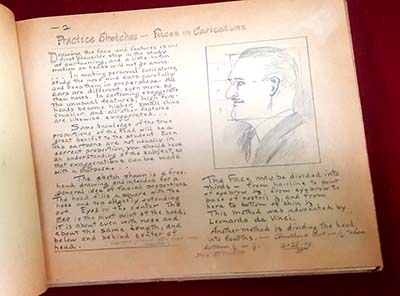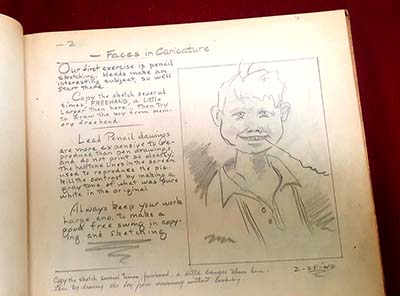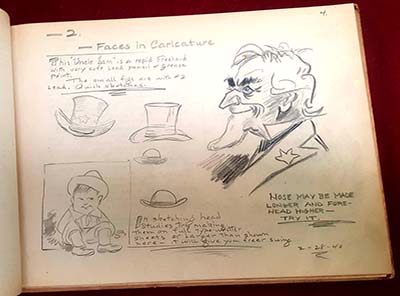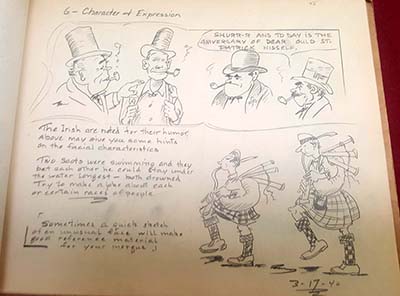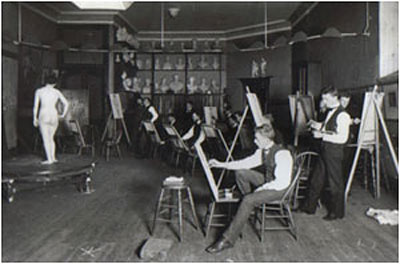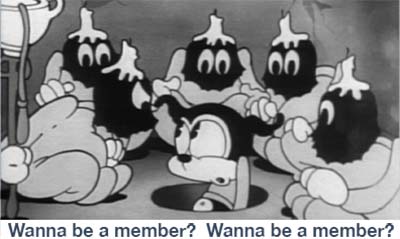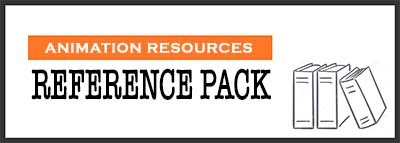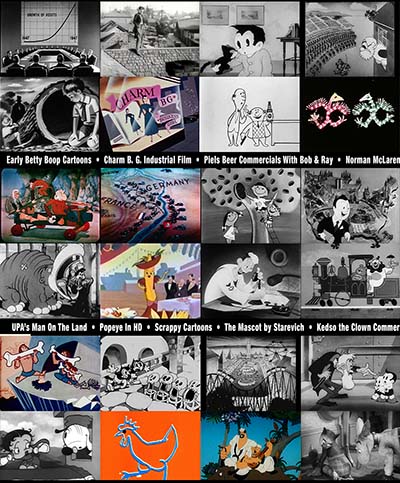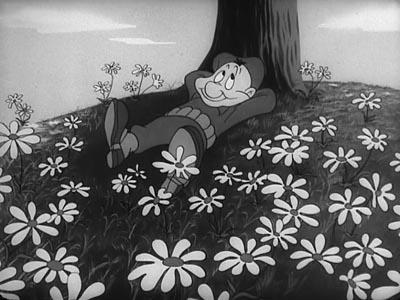Yesterday, I received an email that changed the way I think about the world we live in and the work we do here at Animation Resources…
A gentleman sent me photos of a hand drawn book that he had found. It consisted of a cover to cover copy of “How To Draw Funny Pictures” by E. C Matthews and Eugene "Zim" Zimmerman. He told me that the book consisted of over 80 carefully drawn pages, each one dated with a date from the early Spring to the Fall of 1940. He asked me what it could have been made for. I started to explain that it looked like a student’s copy of the book, but then I stopped and thought for a moment…
Why would a student copy a book text and all? It was a mystery. But the more I thought about it, the more the explanation became clear.. This book was published in 1928. By 1940, it would have been long out of print. The only place a student could access a copy was at the public library. But back then, they didn’t have Xerox machines or cell phones with cameras. The only way a student could get a copy of the book for himself would be to copy it by hand. This student obviously saw the incredible value of these lessons and wanted a copy of them to work with… so he spent week after week for months going to the library to copy every page by hand. Think about that for a minute. Imagine the dedication it would take to resolve yourself to copy a whole book by hand just so you would always have access to its information.
Today, we’re spoiled. If we want to see great artwork, we can Google it up from the internet. If we want a book to study, we just order it from Amazon and it’s delivered to our doorstep in two days. We take it for granted that all of this information is available to us so easily. We don’t have to spend the time that this artist did. I can’t even fathom how precious this sketchbook copy must have been to him. He invested his time and energy into fully absorbing it page after page, week after week, until the information became a part of him. As he got deeper into the book, he must have grown as an artist as well.
Now I’m not recommending that students hand copy important books. But I do want to get across the idea that the material artists feed their brains with is important to their growth. We should appreciate the motherlode of great reference material we have access to. Animation Resources republished the entire Zim Course for its members— over 700 pages of great lessons, advice and inspiration. I’m sure a lot of you have it sitting on your hard drives and you’ve spent some time browsing it. But have you spent the time and energy to absorb it to the degree that this artist did? We should all have that much dedication!
Every other month, Animation Resources publishes an e-book for its members. They’re jam packed with valuable and relevant information from the past to help you grow as an artist. Ralph Bakshi once commented that he hopes the kid artists out there appreciate the treasures that Animation Resources shares with them. Ralph didn’t have those sorts of opportunities when he was first starting out. But today, artists who are members of Animation Resources get the good stuff that he he spent years researching and seeking out handed to them every other month as a convenient digital download.
If you are an artist who is interested in bettering yourself with new ideas, new skills and great inspiration and you aren’t a member of Animation Resources, you should ask yourself if you are as dedicated to reaching your goals as this artist was. Do you appreciate the work Animation Resources is doing? If so, why haven’t you joined yet?
Every other month, you can receive a Reference Pack with an e-book and downloadable animated films… the sort of thing that would have made the artist who meticulously copied this book jump for joy. Support the group that supports your growth as an artist. Dedicate yourself to helping us raise the bar for cartooning, illustration and animation. It’s worth it. The foundation of knowledge from the past will help us create a whole new world that surpasses the Golden Age. What are you waiting for?
Back To School Days At Animation Resources
Fall is time to join Animation Resources as a student member. Annual dues for full time students and educators is discounted. It’s the biggest bargain in animation at only $70 a year. Animation School is great, but it doesn’t give you everything you need to become a professional animator. You need to invest in self-study to be successful in this highly competitive field. That’s exactly what Animation Resources can help you do if you become a member. Each day we’ll be highlighting more reasons why you should join Animation Resources. Bookmark us and check back every day.
There’s no better way to feed your creativity than to be a member of Animation Resources. Every month, we share a Reference Pack that is chock full of downloadable e-books and still framable videos designed to expand your horizons and blow your mind, as well as educational podcasts and seminars. It’s easy to join. Just click on this link and you can sign up right now online.
https://animationresources.org/membership/levels/
FREE SAMPLES!![]()
Not Convinced Yet? Check out this SAMPLE REFERENCE PACK! https://animationresources.org/student-membership-free-samples/ It will give you a taste of what Animation Resources members get to download every other month!
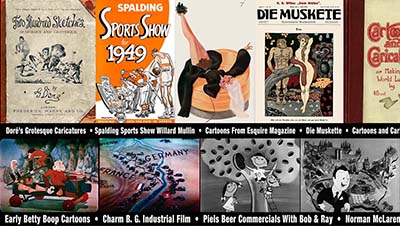
JOIN NOW! https://animationresources.org/membership/levels/
















